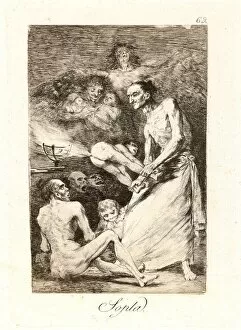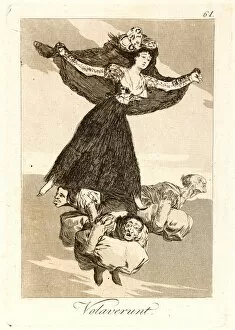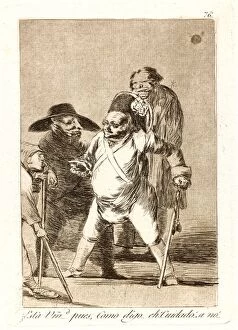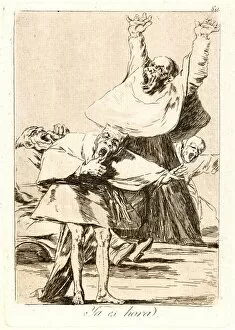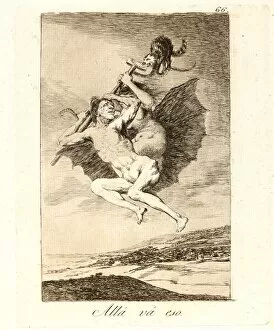From Los Caprichos Collection
"From Los Caprichos: A Glimpse into the Artistic World of Francisco de Goya" Step into the captivating world of Francisco de Goya
All Professionally Made to Order for Quick Shipping
"From Los Caprichos: A Glimpse into the Artistic World of Francisco de Goya" Step into the captivating world of Francisco de Goya, a renowned Spanish artist whose works continue to mesmerize audiences even centuries later. Among his notable creations are pieces from his series called "Los Caprichos, " which provide a unique insight into Goya's artistic genius and social commentary. In one such piece titled "Sopla" (Blow), created in 1796-1797, we witness an intriguing scene where a mysterious figure blows out candles, symbolizing the extinguishing of light or truth. This enigmatic artwork invites viewers to contemplate deeper meanings hidden within its shadows. Another striking composition is "Al Conde Palatino, " showcasing Goya's ability to capture human emotions with remarkable precision. The painting depicts a nobleman deep in thought, perhaps burdened by the weight of his responsibilities or lost in contemplation. Goya's art often delves into societal issues and injustices as seen in "Por que fue sensible" (Why was she sensitive). This poignant piece portrays a vulnerable woman surrounded by mocking figures, highlighting society's tendency to exploit vulnerability rather than empathize with it. "Tal para qual" (Two of a kind) presents two women engaged in conversation while holding masks that conceal their true identities. Through this work, Goya questions the authenticity behind people's interactions and raises awareness about societal facades. In "Ruega por ella" (She prays for her), we witness an emotional moment as a mother fervently prays for her child. This heartfelt depiction reminds us of the power of maternal love and devotion that transcends all boundaries. Goya also explores themes related to justice and morality through artworks like "Ensayos" (Trials) and "Que pico de Oro. " (What a golden beak. ). These thought-provoking pieces invite viewers to reflect upon the flaws and corruption within society's systems.

